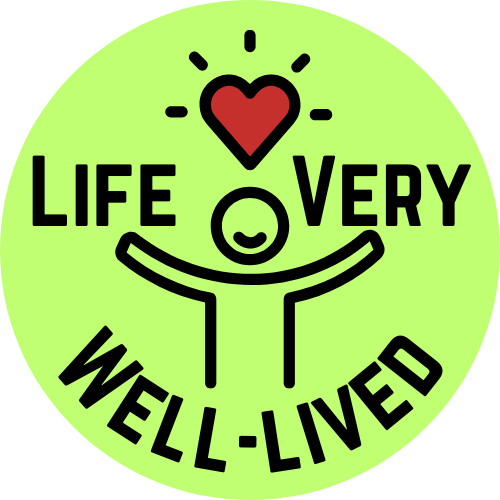In our article, “Focus on Health: Your Ultimate Guide to Wellness,” we offer a comprehensive exploration into the realms of health and fitness. With an emphasis on holistic well-being, we aim to provide you with valuable insights, practical tips, and evidence-based research to empower you on your journey towards optimum health. Whether you’re seeking guidance on nutrition, exercise, mental wellness, or preventive care, our article serves as a reliable resource that delves into various aspects of health, helping you make informed decisions and fostering a balanced, thriving lifestyle.
Physical Fitness
Understanding the Importance of Regular Exercise
Regular exercise plays a crucial role in maintaining overall health and well-being. Engaging in physical activity has numerous benefits, including weight management, improved cardiovascular health, increased muscle strength, and enhanced mental well-being. Exercise is also essential for preventing chronic diseases such as heart disease, diabetes, and certain types of cancer. By understanding the importance of regular exercise, we can prioritize physical fitness and make it a part of our daily routine.
Different Types of Exercises for Different Fitness Goals
There are various types of exercises that serve different fitness goals. Some common types include cardiovascular exercises, strength training, flexibility and balance exercises, and aerobic activities. Cardiovascular exercises, such as running, swimming, or cycling, aim to improve heart health and increase endurance. Strength training involves working with weights or resistance bands to build muscle strength and enhance overall fitness. Flexibility and balance exercises, like yoga or Pilates, focus on improving flexibility, coordination, and preventing injuries. Aerobic activities, such as dancing or kickboxing, combine cardiovascular exercise with muscular strength training.

This image is property of pixabay.com.
Creating an Effective Workout Routine
To maximize the benefits of exercise and achieve our fitness goals, it is important to create an effective workout routine. This routine should include a combination of cardiovascular exercises, strength training, flexibility and balance exercises, and rest days for recovery. It is crucial to vary our workouts to prevent plateau and keep our bodies challenged. We should also consider our individual fitness level, preferences, and any specific goals we may have. Consulting with a fitness professional can help us create a personalized workout routine tailored to our needs.
How to Stay Motivated for Regular Physical Activity
Staying motivated for regular physical activity can be challenging, but there are strategies we can employ to maintain our motivation. Setting realistic goals and tracking our progress can help us stay focused and committed. Finding an exercise buddy or joining group classes can provide a sense of accountability and social support. Incorporating activities we enjoy and mixing up our workouts can also help keep exercise interesting and exciting. Additionally, rewarding ourselves for achieving milestones or reaching fitness targets can help sustain motivation and create a positive mindset towards exercise.

This image is property of pixabay.com.
Benefits of Strength Training
Strength training, also known as resistance training, offers a range of benefits for overall health and well-being. This type of exercise helps build and maintain muscle mass, increase bone density, and improve joint stability. Strength training can also contribute to weight management by boosting metabolism and supporting fat loss. Furthermore, engaging in regular strength training can enhance functional fitness, making everyday tasks easier and reducing the risk of injuries. As we age, strength training becomes even more important for maintaining independence and preventing age-related muscle and bone loss.
Cardiovascular Exercise and its Impact on Health
Cardiovascular exercise, also known as aerobic exercise, is essential for maintaining a healthy heart and improving overall cardiovascular health. Engaging in activities that raise our heart rate, such as brisk walking, jogging, or swimming, helps strengthen the heart muscle, lower blood pressure, and improve circulation. Regular cardiovascular exercise can also reduce the risk of heart disease, stroke, and diabetes. By incorporating cardiovascular exercise into our fitness routine, we can improve our endurance, boost energy levels, and enhance our overall quality of life.

This image is property of pixabay.com.
Incorporating Flexibility and Balance Exercises in Your Routine
In addition to cardiovascular exercise and strength training, it is crucial to include flexibility and balance exercises in our fitness routine. Flexibility exercises, such as stretching or yoga, improve muscle elasticity, joint mobility, and posture. They can also prevent injuries and enhance athletic performance. Balance exercises, such as tai chi or standing on one leg, help improve stability and coordination, reducing the risk of falls, especially in older adults. Including a variety of stretching, yoga, and balance poses in our workouts can improve flexibility, balance, and overall physical function.
Preventing Injuries during Exercise
While exercise offers numerous benefits, it is important to take precautions to prevent injuries. Prior to starting any new exercise program, it is advisable to consult with a healthcare professional or fitness expert. They can assess our fitness level, provide guidance on proper form and technique, and tailor exercises to our individual needs. Warm-ups and cool-downs should always be incorporated into our workouts to prepare our muscles and reduce the risk of strain or injury. Additionally, using proper equipment, wearing appropriate footwear, and listening to our bodies’ signals can help prevent overexertion and avoid unnecessary injuries.

Exercise Tips for Beginners
Starting a new exercise routine can be daunting, especially for beginners. However, there are several tips that can help ease the transition into regular physical activity. It is important to start slowly and gradually increase the intensity and duration of our workouts, allowing our bodies time to adjust. Setting realistic goals and celebrating small achievements along the way can keep us motivated and encouraged. Additionally, finding activities we enjoy and varying our workouts can make exercise more enjoyable and sustainable. Lastly, listening to our bodies, resting when needed, and seeking guidance from fitness professionals can ensure a safe and effective exercise journey.
Tracking and Monitoring Your Fitness Progress
Tracking and monitoring our fitness progress is essential for staying motivated and assessing the effectiveness of our exercise routine. There are various methods we can use to track our progress, such as keeping a workout journal, using fitness apps, or using wearable fitness trackers. These tools can help us keep a record of our workouts, measure our performance, and track changes in our fitness levels, body composition, or cardiovascular health. Regularly reviewing and analyzing our progress can help us stay on track, make necessary adjustments, and celebrate our achievements along the way.


